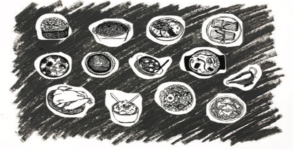Many students at Mills are aware of the newly enforced gate policy, which makes it a requirement to either have a Mills ID or check in with the officer at the gate, telling them where you are going and giving them photo identification when entering campus through the main gate.
While we applaud Public Safety for cracking down on the entrance and exit to campus, there is much more that needs to be done to truly make our campus safe.
Lighting walkways, roads and parking lots is a relatively cheap and easy thing to do that will make students feel more comfortable and safe. Currently, many of the parking lots are so dark at night that students returning to their cars have to turn on their cell phone screens just to see the keyhole on the door. The same goes for many of the walkways through campus. While we understand light pollution is an issue, the safety of students should supercede aesthetics. No one is asking that campus be lit up like a baseball stadium, but some well-placed lights in parking lots and along main walkways and roads will go a long way.
Another safety aspect sorely missing from our campus are outdoor emergency phones with direct lines to campus safety. Almost ubiquitous on college campuses today, these are placed clearly in well-traveled areas for students to pick up and immediately talk to a Public Safety officer if they are attacked or feel threatened. Although many students have cell phones, many of them don’t know how to call Public Safety from an outside line, which means that if there is a problem, they would be forced to call 911 from their cell phone. What many people don’t know is that calling 911 from a cell phone connects you to CHP regional dispatch center in Vallejo. They then have to patch you through to your local police station, a process that can take an agonizingly long time, especially if you’re in a situation that merits calling 911.
We are encouraged by the soon-to-be implemented key card access system in Warren Olney Hall. Key cards offer a much safer system than a traditional key, as they can be disabled immediately if lost or stolen, and there will be no worry of people having access to buildings with keys that are years old (it’s not that hard to get a copy of a key even when it says “do not copy” on it). We hope that the trial in Olney is successful and the rest of campus will be converted to ID key cards in the near future.
While these are being implemented, the school should make and distribute wallet-sized cards to all students with the phone number of Public Safety and the emergency and non-emergency numbers of the Oakland Police (the emergency number is a 510 area code number that gets you directly to the police, instead of to the CHP 911 headquarters.)
Keeping students safe doesn’t end with securing the front gate. The fence isn’t that high.


